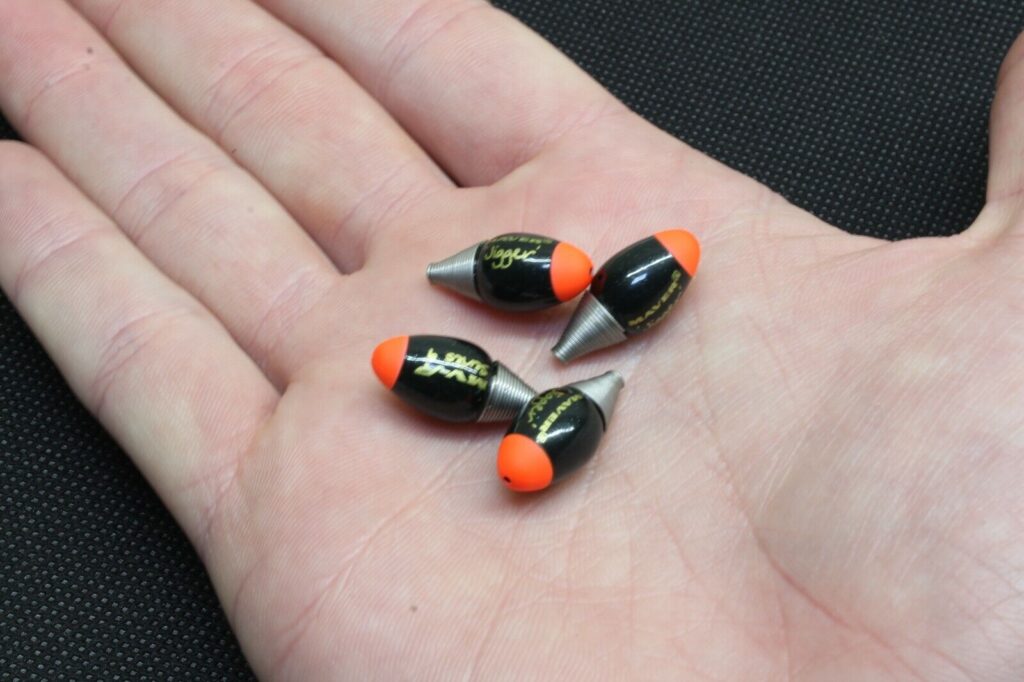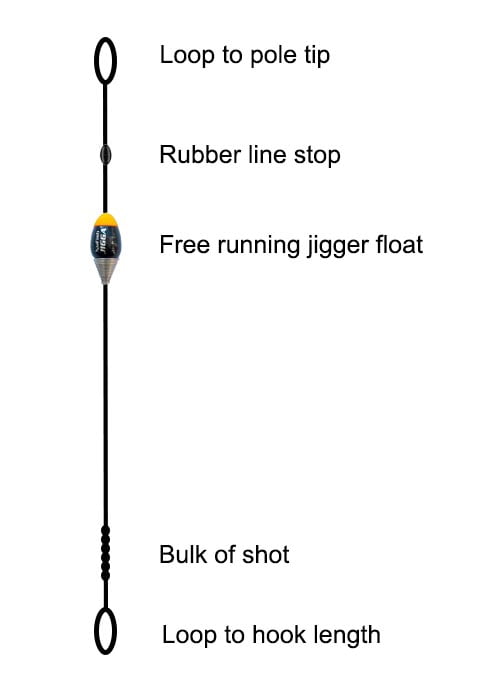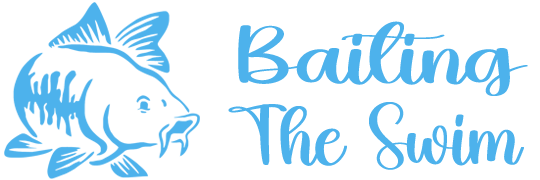When the weather gets warmer, shallow fishing comes into its own for catching large weights of fish quickly. One of the best and easiest ways to do this is with the jigger rig. A devastating tactic for catching mainly F1s, but also carp and silvers on its day.
If you’ve never fished with a jigger previously, our guide will show you everything you need to get started. We’ll cover how to tie the jigger rig. The best baits to use with the jigger rig. Most importantly, how to fish with the jigger effectively to catch large weights of fish. If you’re new to jigger fishing and want to give it a go, you’re in the right place.
What is a Jigger?
The jigger is a small-bodied inline float that allows you to keep a tight line between the pole tip and hook bait at all times. It is ideal for shallow fishing because you can fish at various depths in the water using a single rig rather than using lots of top kits set up with different fixed rigs.
The jigger is a self-cocking float that sits on the water surface without needing additional shots. The float runs freely on the rig, allowing you to raise and lower your pole to fish at various depths without adjustment.
A small bulk of shots are placed just above the hook length to help lower the bait to the desired depth whilst maintaining a tight line. Fishing so directly and with a tight line creates a bolt rig effect that results in most fish hooking themselves against the tension of the pole elastic without the need to strike.

How to Tie a Jigger Rig
The jigger rig is one of the simplest rigs to tie for shallow fishing. Start with a relatively long length of line that is around halfway to two-thirds of the depth of water you are fishing in. For example, if you’re fishing a venue around five feet deep, you will want your jigger rig to be two-and-a-half to three feet long.
The line needs to be fairly robust, but not too thick that it doesn’t pass through the jigger float easily. A 0.16mm to 0.18mm diameter line is perfect for most scenarios. You will also need a rubber line stop, your chosen jigger float, shot or cube shot, and a small hook length of two to four inches with a bait band and a size 16 hook.
- Start by tying a small loop at the top of the line. This will is used to connect the rig to the elastic of your pole.
- Slide a rubber line stop up the line towards the top of the rig. This will allow you to adjust the depths you are fishing at. Be mindful of fishery rules regarding the minimum amount of line between your pole tip and float.
- Put the line through the middle of the float and move it up the line out of the way.
- Tie another loop at the bottom of the rig which will be used to attach the hook length.
- Above the hook length loop, add a bulk of shots balanced to the size of the jigger float. The shot isn’t required to cock the float but will assist with lowering your bait to the required depth.
- Attach your hook length to the loop at the bottom of your rig. Balance your rig by using a smaller diameter line for your hook length. 0.14mm diameter line to a size 16 banded hook is perfect in this example.
Once completed, the rig should look similar to the diagram below.

How to Store a Jigger Rig
The ideal way to store a jigger rig is to attach it to a top kit or wrap it on a spool. This will ensure that the line remains as straight as possible. Alternatively, you can store the rig on a normal rig winder. This should be a last resort as it will add kinks to the line making it difficult to pass through the float easily.
Pole Elastic for Jigger Fishing
The elastic in your top kit needs to be balanced with the fish you are targeting. For F1s and silvers, a softer elastic such as number 11 pole elastic will stretch enough to cushion the bite but will also power up enough to get the fish in quickly. If the F1s are large or there are lots of carp in the lake, step up the elastic choice accordingly.

Which Baits to Use with a Jigger
Once you have tied your jigger rig, you are ready to catch some fish. Maggots, casters, and pellets are ideal baits to use for shallow fishing. Attach the bait using a bait band. This will deter smaller fish from taking small baits allowing you to target larger fish.
Using a sloppy groundbait mix can also be an extremely effective way of getting fish to compete up in the water.

How to Fish the Jigger
To begin your session, feed small quantities of bait regularly in a tight area where you intend to fish. The best method to achieve this is with a catapult. You can also feed by hand if you don’t have one available. The aim is to get the fish to feed competitively in the upper layers of the water. You will know they are there when you see swirls and even fish coming to the surface when you feed. Once the fish are there, continue to feed little and often to keep them competing near the surface.
Once the fish have arrived, ship your pole out to the area you intend to fish. Begin by slapping the float in the water to create noise and attract the fish. Try to maintain a tight line as you slap the rig over in case of quick bites. The weight of the shots on the line will keep everything tight between your hook and the pole. Lower the pole tip towards the jigger so that the line passes through the float. This is how you explore different depths until you find where the fish want to feed. “Jig” your line up and down at various depths until you get a bite.
When you get a bite, the fish will normally hook themselves without striking. This is because of the tight line when using the jigger rig. Keeping a tight line and fishing directly creates a bolt rig effect against the tension of the pole elastic.
After a few bites, you should begin to understand what depth the fish are feeding in. You can speed up the frequency of bites by reducing the amount of time spent at the wrong depth. To do this, adjust the position of the line stop on the rig so less line can pass through the float. Be prepared to move the line stop multiple times during the session as the depth will vary throughout the day.
A good indication that you are fishing at the wrong depth is foul hooking fish. If you notice you are foul hooking lots of fish, fish deeper. If you see lots of sideways movement on the float between bites, fish shallower.
We hope you found our guide to fishing the jigger useful. If you have any questions regarding this simple but effective method let us know. You can leave us a comment below or send a message via the Contact Us page.



